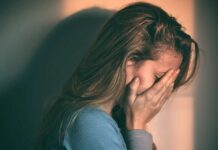As nations pronounce endemicity and drop limitations, how does a battered and wounded society accept an abrupt return to normality?
SINCE JANUARY 27, England has dropped essentially the entirety of its actions against Covid-19. Any individual can walk into any shop without a cover; telecommute direction has been rejected; and all needs for an antibody identification have been crushed. Britain will be the “most open country in Europe,” broadcasted wellbeing and social consideration secretary Sajid Javid.
Furthermore other European nations are going with the same pattern. Ireland has dropped practically the entirety of its limitations, bar veil prerequisites. Denmark is likewise killing all actions starting February 1, with the exception of testing on appearance from abroad. Other Nordic nations have flagged they will likewise do likewise before long. The Spanish government is encouraging European nations to think about how conceivable it is that Covid-19 can now be treated as an endemic infection an extremely durable installation in our lives.
In spite of transcending case numbers for Omicron, these areas of the planet are starting to pronounce ostensibly rashly that the most awful of the pandemic is behind them. It’s an ideal opportunity to continue ahead with it, to figure out how to live with Covid, they say. The World Health Organization has cautioned that new variations are probably going to arise and that the pandemic is not even close finished. However, an insightful choice or not, it’s occurring.
What’s the deal? Stuck at home for the beyond two years, our interactive abilities have rotted, we’ve grown out of our pants, and we’ve fostered a tenacious doubt for each hack and wheeze. Yet, presently, abruptly, we’ve been liberated, encouraged to plunge once again into a Wild West amendment of the new typical. How might we adapt? What more injuries will we be conveying?

George Bonanno, a clinical therapist at Teachers College, Columbia University, figures the vast majority will invite the get back to business as usual (or some similarity to the past ordinariness). “I think individuals are truly prepared to move free from the shadow of this thing,” he says. In his book, The End of Trauma, he puts forth the defense that people are stronger than we give ourselves credit for. While some have named the pandemic a “aggregate mass injury occasion,” Bonanno abrades at this term. An awful mishap is characterized as one that is surprising and rough or perilous. “Whenever individuals begin discussing aggregate injury, they get into the deception of some kind of clinical demonstrative thing, and that is simply unacceptable.” The bountiful abuse of “injury” in easygoing references implies the word is losing a portion of its clinical weight, not least on account of the pandemic, he thinks.
However, for some’s purposes, it has unquestionably been awful. Medical care laborers, who have borne the brunt of really focusing on patients and seeing them endure and kick the bucket, and have worked unwaveringly extended periods in troublesome conditions for the beyond two years, are detailing record levels of post-horrendous pressure problem, an emotional wellness condition set off by an awful encounter, with indications including flashbacks, trouble resting, nervousness, and bad dreams. As indicated by demonstrating from the Royal College of Psychiatrists in the United Kingdom, 40% of serious consideration staff have manifestations of PTSD, as well as 35% of Covid patients who have been ventilated.
To check the approaching mental aftermath from the pandemic, different plagues might fill in as models. One review directed in Hong Kong took a gander at persistent PTSD rates among overcomers of SARS, more than two years after the 2003 pandemic. Close to half had PTSD sooner or later after the episode, and over a quarter were all the while experiencing with it following 30 months. Another investigation discovered that PTSD was the most widely recognized long haul mental condition among survivors.
While it probably won’t be horrendous for all, the Covid pandemic has is known as an ongoing stressor, meaning an almost consistent wellspring of stress and nervousness. Here and there lockdowns, a huge number of passings, divided childhoods, crushing misfortunes, wellbeing tensions all have caused significant damage. It’s not unexpected and sensible that a getting back to typical will ignite uneasiness for certain, says Bonanno. Many have become used to a loner way of life, or have even tracked down solace in it. Some might even need to remain locked inside for longer, inspired by a paranoid fear of being contaminated, a response that has been named “cave disorder.” And there is proof that the steady murmur of misery has converted into longer-enduring conditions for some. As per information from the UK’s Office for National Statistics, paces of misery multiplied in the UK in mid 2021. Reports of tension and misery indications additionally rose significantly in the US.
After all, it’s hard to ignore that Covid is still very much here. Life is inherently risky. Common activities—such as crossing the street or driving a car—all carry risk. But the stakes are higher now for many everyday activities. Before the pandemic, the biggest risk of a trip to the pub was the next day’s hangover. Now, it’s catching a virus. “What I think is hard now is that people kind of want to say, ‘Well, when is it safe? When is it going to come back to the point of being safe?’” says Julie Downs, a social psychologist who researches risk perception at Carnegie Mellon University. But 100 percent safety against Covid might never arrive.
Also vitally, we haven’t all endured a similar tempest. Certain people group have been compelled to bear the most exceedingly awful impacts of the pandemic: minorities and those in less fortunate regions have experienced the most. What’s more for some, a constrained re-visitation of predictability implies getting back with a crippling, life-contracting condition: It’s assessed that 1.3 million individuals in the UK are living with long Covid, a term used to depict an instance of Covid that stretches on for weeks or months, with side effects, for example, cerebrum haze, exhaustion, and windedness.

As far as some might be concerned, there is no get back to business as usual. For Nick York, the releasing of limitations for others implies more tight limitations in his own life. York, who is in his late fifties and lives in the Midlands in England, has been living with persistent lymphocytic leukemia, a disease of the resistant framework, for more than 10 years. His condition implies his body doesn’t mount a reaction to immunizations; it battles to protect itself against any microbe. For York and other immunocompromised individuals, an administration’s revelation that society will “live with Covid” signifies it will be living without them. The dropping of covering necessities implies he is generally bound to his home. He can’t go into shops. He can’t travel. He has spent the beyond two Christmases alone. He battles to see his own little girl. “It’s basically eliminated a wrap of society,” he says of the facilitating of limitations.
York describes himself as pretty resilient, but he says he feels forgotten—by his own local community and by the government. “The feeling of isolation, the mental health side of that, it’s hard to manage,” he says.
One of the consequences of the government lifting restrictions is that the onus to take health precautions will fall from the collective to the individual. “As we move to thinking about Covid as an endemic risk instead of a pandemic, it comes along with this shift from a public health approach of ‘What can we all do to help reduce the systemic impact of this event?’ to this being one of all the risks that we’re trying to reduce for ourselves,” says Downs. “And it’s going to take a while for people to reorient and make their own decisions.”






























